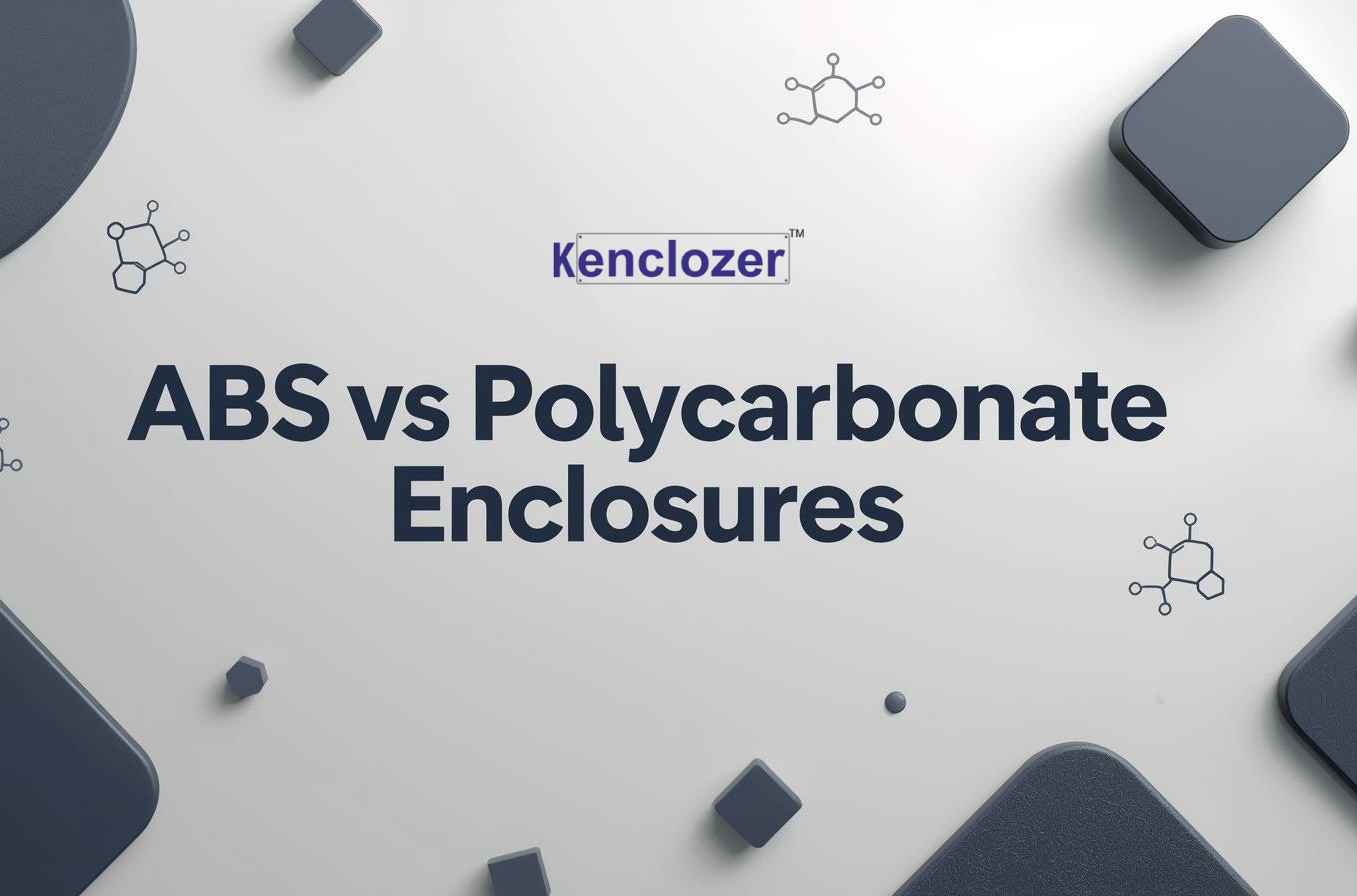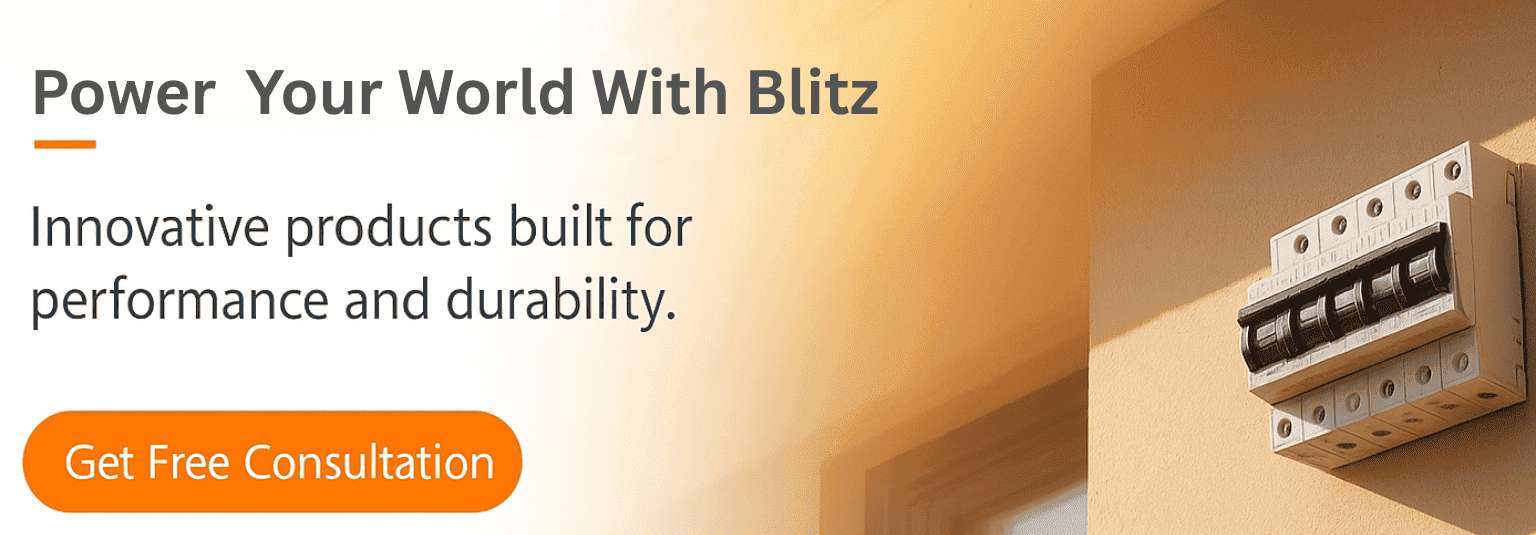ABS vs Polycarbonate Enclosures - Which Is Better for Your Application?

Among the major factors in wiring and providing electronic protection, the right selection of the enclosure material in terms of safety, strength, and durability over time is the most significant factor. ABS (Acrylonitrile Butadiene Styrene) and Polycarbonate (PC) are two most common materials that are frequently used for the production of electrical enclosures.
In fact, both substances have almost identical appearances and are similarly utilized for the housing of the electric components, however, their performance, lifespan, and cost differ drastically. It is absolutely vital to be aware of these differences if you want to find out the right enclosure for your industrial, commercial, or residential application.
This detailed guide will compare ABS vs Polycarbonate Enclosures - their characteristics, advantages, disadvantages, and examples of users - to help you make the right decision.
Introduction to ABS and Polycarbonate Enclosures
What Are ABS Enclosures?
ABS (Acrylonitrile Butadiene Styrene) is the one of the primary components of a typical plastic mixture called a thermoplastic polymer. It is a plastic that is attractive in many ways because it is very light, resistant to impacts, and can be easily molded. In general, the material is used in the production of indoor electrical boxes, control panels, and small electronic device housings because of its cheapness and nice surface.
Besides, ABS enclosures are perfect settings in which there is no or very little direct sunlight, high temperatures, or exposure to chemicals. They have almost no competition in terms of cost and still are able to give high mechanical strength.
What Are Polycarbonate Enclosures?
Polycarbonate (PC) is a high-end engineering thermoplastic of the next generation, which provides excellent impact strength, UV resistance, and heat resistance. Generally, it finds its usage in the electrical systems of the outdoors or industries, solar, and telecom applications, and other such cases where the environment is unfavorable.
While ABS can be broken down by weather, polycarbonate still holds its strength even after being subjected to extreme weather, UV rays, and heavy mechanical stress, thus, it is a great option for installations of long duration.
Key Differences Between ABS and Polycarbonate Enclosures
| Feature | ABS Enclosure | Polycarbonate Enclosure |
|---|---|---|
| Material Composition | Acrylonitrile Butadiene Styrene (thermoplastic) | Polycarbonate (engineering thermoplastic) |
| Strength & Impact Resistance | Good | Excellent (up to 250x stronger than glass) |
| UV Resistance | Poor (discolors and weakens under sunlight) | Excellent (UV-stabilized grades available) |
| Temperature Resistance | Up to 80°C | Up to 120°C or higher |
| Chemical Resistance | Moderate | Good – resistant to acids, oils, and solvents |
| Weight | Lightweight | Slightly heavier than ABS |
| Cost | Economical | More expensive |
| Transparency | Opaque (can be colored) | Transparent or translucent options available |
| Weatherproofing | Limited (indoor use) | Excellent (outdoor & industrial use) |
| Applications | Indoor electronics, control panels | Outdoor enclosures, solar, telecom, industrial controls |
Detailed Comparison and Analysis
a. Strength and Impact Resistance
ABS: Provides good toughness but could fracture if a heavy impact is applied. Can be a good choice for places where the product won’t be subjected to hard mechanical stress.
Polycarbonate: Is the most impact reactive of the lot - even if dropped or hit, it hardly ever breaks. Since it is the very material that is used in making bulletproof glass and safety helmets, it can be the perfect choice both for industrial and outdoor use.
b. Weather and UV Resistance
ABS: It is a photosensitive substance and as a result of that, it will lose its properties over time when it is overexposed to the rays of the sun, and its appearance will change to yellow and its flexibility reduced as well. It is a substance that, therefore, cannot be stored long.
Polycarbonate: In fact, the product can almost totally resist sun radiation. The UV resistance of a material can also be improved if a UV stabilizer is blended with it or if a protective layer is put on it. The material looks the same and has the original strength even after being exposed to the sun for several years.
c. Thermal Performance
ABS: Is good in normal temperature ranges but becomes soft at approximately 80°C.
Polycarbonate: It works well up to 120°C and can withstand several seconds of higher temperatures, hence it can be utilized in the high-temperature electrical devices.
ABS is not as temperature resistant as polycarbonate.
d. Chemical Resistance
ABS: Certain oils, acids, and organic solvents may cause it to be sensitive.
Polycarbonate: It is more resistant to the influence of chemicals, which is why it can much better resist the presence of industrial fluid and cleaning agents.
Polycarbonate is not easily chemically damaged.
e. Cost Efficiency
ABS: Highly affordable and cost-effective for mass production.
Polycarbonate: Due to better mechanical and weathering properties, it is about 30-50% more costly.
While ABS is the cheaper option in the beginning, Polycarbonate is the one that has a better long-term value.
f. Aesthetic and Design Flexibility
ABS: It is simple to work with a machine, mold, and paint; the product made is with a smooth surface and is perfect for indoor consumer products.
Polycarbonate: It is a bit more difficult to handle, but it can be made transparent, smoky or tinted. Perfect for housing that still want to show the inside of the components.
Choose ABS for design economy; choose Polycarbonate for visibility and performance.
Application Comparison: Where Each Material Fits Best
When to Choose ABS Enclosures
ABS enclosures are perfect when:
- The installation is indoors or in a controlled environment.
- The equipment generates low heat.
- Budget is the main factor that is taken into consideration.
- The enclosure will be kept in a condition free of sun rays and harsh chemicals.
Common Uses:
- Control panels and switch boxes
- Consumer electronics housings
- Instrumentation enclosures
- Office and residential electrical systems
When to Use Polycarbonate Enclosures
If an installation is outside or exposed to weather, polycarbonate enclosures would be a wise choice.
If the equipment requires a very strong and durable performance for a long time, then a polycarbonate enclosure will be the right choice.
If a system is likely to undergo mechanical impacts or vibrations, then a polycarbonate enclosure would be appropriate.
In case you require protection which is both UV-resistant and flame-retardant,
Common Uses:
- Solar PV junction boxes
- Industrial automation panels
- Telecom and networking systems
- Weatherproof electrical boxes
- Marine and field equipment
Cost vs Performance: Long-Term Perspective
If we look at the situation from the outside, ABS enclosures appear to be cheaper. But, in case an ABS enclosure is damaged because of weathering, UV exposure, or some kind of impact, the cost for its replacement (which also includes the cost for the downtime and the repairs) can be many times higher than the money saved at the purchase of the product.
By using polycarbonate you will have a longer life of the material and a higher reliability which will eventually pay off the maintenance and replacement costs even though it is a bit more costly at first. The use of polycarbonate enclosures is a wise decision for the systems that are going to be outdoors or are electrical critical.
Environmental and Safety Considerations
ABS: The material is risk-free to human beings and can be recycled, although, it is not as eco-friendly as a polycarbonate. Any fire that will be dealing with this material will spread quicker and will produce more smoke.
Polycarbonate: The polymer is also a flame-retardant (UL94 V-0) and, moreover, it is more heat resistant per unit area.
Actually, polycarbonate could be safer as a substitute in case of fire as it is less flammable, and is more resistant to accidental impacts.
Industry Standards and Certifications
A well-finished outer body either of ABS or Polycarbonate material should be at the level of standards detailed below:
- IP Ratings (Ingress Protection) - The two numerals following the letters IP in a code indicate the level of protection that the body has against the penetration of dust and water.
- IK Ratings - Establish the level of a device's protection against the performance of external mechanical impacts.
- UL94 - Refers to the specification standard of the flammability of plastics.
In most cases, Polycarbonate can achieve higher IP (up to IP67) and IK ratings thus can be used in extreme conditions or areas exposed to the weather.
Which Enclosure Should You Choose?
| Scenario | Best Choice |
|---|---|
| Indoor electrical or electronic applications | ABS Enclosure |
| Outdoor or industrial installations | Polycarbonate Enclosure |
| Applications exposed to sunlight, heat, or chemicals | Polycarbonate Enclosure |
| Cost-sensitive, low-impact projects | ABS Enclosure |
| Long-term durability and safety | Polycarbonate Enclosure |
FAQs

Conclusion
Both ABS and polycarbonate enclosures are strong in different areas - ABS is great for cost-effectiveness and use in the indoors, while Polycarbonate is the one that is tough, can withstand the weather, and is safe.
In case you are planning or choosing enclosures for the indoor, cheap, and non-critical type of systems, then ABS would be a good option.
However, in the case of outdoor, heavy-duty, or electrical applications that are going to be carried out for a long time, Polycarbonate is definitely the better choice of a product - thus, ensuring functionality, safety, and tranquility of mind for a few more years.
If you pump safety, durability, and trustworthiness into your product, then go for Polycarbonate Enclosures.